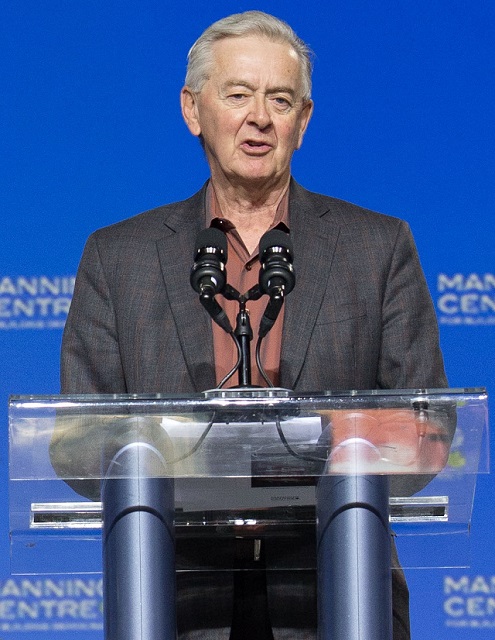Alberta
Conservatives say Federal Government cancelled ‘prescribed burn’ which may have saved Jasper

Photo from Parks Canada – Jasper Fire, Cabin Creek
From the Facebook page of Conservative MP Dan Mazier
BOMBSHELL EVIDENCE

From Red Deer MP Blaine Calkins
Trudeau’s Radical Environment Minister confirms he was briefed on the serious likelihood of a catastrophic fire in Jasper. But he cannot confirm what direction he gave to immediately clear the deadwood tinder box around Jasper. Experts warned. Liberals ignored.

Photo from Parks Canada – Jasper Fire, Geike Street
News release from the Conservative Party

Photo from Parks Canada – Jasper Fire, Geike Street Looking To Patricia Street
Over the past few years, consecutive Liberal Environment Ministers refused to listen to experts when they warned repeatedly that Jasper National Park was at “serious risk of a catastrophic fire.” But they took no action, and now one-third of Jasper has been destroyed, a firefighter lost their life, while peoples’ livelihoods have been destroyed.
This was made clear in a House of Commons’ Committee yesterday when Trudeau’s radical Environment Minister, Steven Guilbeault, said “there was no stopping this fire.” But this is nothing more than a lie. The Liberal Government has been warned for years that Jasper National Park was at risk. In 2016, Conservatives first raised the alarm that pine beetles and poor forestry management had made Jasper vulnerable to wildfires, but the Liberals ignored our warnings.

Photo from Parks Canada – Jasper fire, Maligne Lodge
Following that, two scientists in 2017-2018, tried to warn the Liberal Government about the growing threat of a wildfire. They wrote to then-Liberal Environment Minister, Catherine McKenna, saying that a century of fire suppression, combined with a warming climate and the mountain pine beetle epidemic, made the likelihood of a major fire “a matter of when, not if.” But all along they were met with condescension and denialism. On top of this, local residents even launched a pressure campaign, calling on Jasper National Park to begin taking actions to mitigate the wildfire risk, but consecutive Liberal ministers did nothing.
Now, Canadians have discovered that Parks Canada prioritized political optics over prescribed burns. In an email, a senior Parks Canada director wrote “at what point do we make the organizational decision to cancel prescribed burns in Western Canada? … Public and political perception may become more important than actual prescription windows.”

Photo from Parks Canada – Jasper fire, Turret Street looking to Miette Avenue
The catastrophic wildfire that occurred in Jasper National Park this summer has not alleviated the risk of another disaster. The threat to communities in Jasper National Park will persist unless the Liberal Government fundamentally changes its approach to forest management, but it’s clear Steven Guilbeault is in denial.
Alberta
CPP another example of Albertans’ outsized contribution to Canada

From the Fraser Institute
By Tegan Hill
Amid the economic uncertainty fuelled by Trump’s trade war, its perhaps more important than ever to understand Alberta’s crucial role in the federation and its outsized contribution to programs such as the Canada Pension Plan (CPP).
From 1981 to 2022, Albertan’s net contribution to the CPP—meaning the amount Albertans paid into the program over and above what retirees in Alberta received in CPP payments—was $53.6 billion. In 2022 (the latest year of available data), Albertans’ net contribution to the CPP was $3.0 billion.
During that same period (1981 to 2022), British Columbia was the only other province where residents paid more into the CPP than retirees received in benefits—and Alberta’s contribution was six times greater than B.C.’s contribution. Put differently, residents in seven out of the nine provinces that participate in the CPP (Quebec has its own plan) receive more back in benefits than they contribute to the program.
Albertans pay an outsized contribution to federal and national programs, including the CPP because of the province’s relatively high rates of employment, higher average incomes and younger population (i.e. more workers pay into the CPP and less retirees take from it).
Put simply, Albertan workers have been helping fund the retirement of Canadians from coast to coast for decades, and without Alberta, the CPP would look much different.
How different?
If Alberta withdrew from the CPP and established its own standalone provincial pension plan, Alberta workers would receive the same retirement benefits but at a lower cost (i.e. lower CPP contribution rate deducted from our paycheques) than other Canadians, while the contribution rate—essentially the CPP tax rate—to fund the program would likely need to increase for the rest of the country to maintain the same benefits.
And given current demographic projections, immigration patterns and Alberta’s long history of leading the provinces in economic growth, Albertan workers will likely continue to pay more into the CPP than Albertan retirees get back from it.
Therefore, considering Alberta’s crucial role in national programs, the next federal government—whoever that may be—should undo and prevent policies that negatively impact the province and Albertans ability to contribute to Canada. Think of Bill C-69 (which imposes complex, uncertain and onerous review requirements on major energy projects), Bill C-48 (which bans large oil tankers off B.C.’s northern coast and limits access to Asian markets), an arbitrary cap on oil and gas emissions, numerous other “net-zero” targets, and so on.
Canada faces serious economic challenges, including a trade war with the United States. In times like this, it’s important to remember Alberta’s crucial role in the federation and the outsized contributions of Alberta workers to the wellbeing of Canadians across the country.
Alberta
Made in Alberta! Province makes it easier to support local products with Buy Local program

Show your Alberta side. Buy Local. |
When the going gets tough, Albertans stick together. That’s why Alberta’s government is launching a new campaign to benefit hard-working Albertans.
Global uncertainty is threatening the livelihoods of hard-working Alberta farmers, ranchers, processors and their families. The ‘Buy Local’ campaign, recently launched by Alberta’s government, encourages consumers to eat, drink and buy local to show our unified support for the province’s agriculture and food industry.
The government’s ‘Buy Local’ campaign encourages consumers to buy products from Alberta’s hard-working farmers, ranchers and food processors that produce safe, nutritious food for Albertans, Canadians and the world.
“It’s time to let these hard-working Albertans know we have their back. Now, more than ever, we need to shop local and buy made-in-Alberta products. The next time you are grocery shopping or go out for dinner or a drink with your friends or family, support local to demonstrate your Alberta pride. We are pleased tariffs don’t impact the ag industry right now and will keep advocating for our ag industry.”
Alberta’s government supports consumer choice. We are providing tools to help folks easily identify Alberta- and Canadian-made foods and products. Choosing local products keeps Albertans’ hard-earned dollars in our province. Whether it is farm-fresh vegetables, potatoes, honey, craft beer, frozen food or our world-renowned beef, Alberta has an abundance of fresh foods produced right on our doorstep.
Quick facts
- This summer, Albertans can support local at more than 150 farmers’ markets across the province and meet the folks who make, bake and grow our food.
- In March 2023, the Alberta government launched the ‘Made in Alberta’ voluntary food and beverage labelling program to support local agriculture and food sectors.
- Through direct connections with processors, the program has created the momentum to continue expanding consumer awareness about the ‘Made in Alberta’ label to help shoppers quickly identify foods and beverages produced in our province.
- Made in Alberta product catalogue website
Related information
-

 2025 Federal Election2 days ago
2025 Federal Election2 days agoOttawa Confirms China interfering with 2025 federal election: Beijing Seeks to Block Joe Tay’s Election
-

 COVID-192 days ago
COVID-192 days agoNearly Half of “COVID-19 Deaths” Were Not Due to COVID-19 – Scientific Reports Journal
-

 2025 Federal Election2 days ago
2025 Federal Election2 days agoHow Canada’s Mainstream Media Lost the Public Trust
-

 2025 Federal Election1 day ago
2025 Federal Election1 day agoBREAKING: THE FEDERAL BRIEF THAT SHOULD SINK CARNEY
-

 Media1 day ago
Media1 day agoCBC retracts false claims about residential schools after accusing Rebel News of ‘misinformation’
-

 2025 Federal Election2 days ago
2025 Federal Election2 days agoReal Homes vs. Modular Shoeboxes: The Housing Battle Between Poilievre and Carney
-

 International23 hours ago
International23 hours agoNew York Times publishes chilling new justification for assisted suicide
-

 2025 Federal Election2 days ago
2025 Federal Election2 days agoPOLL: Canadians want spending cuts






